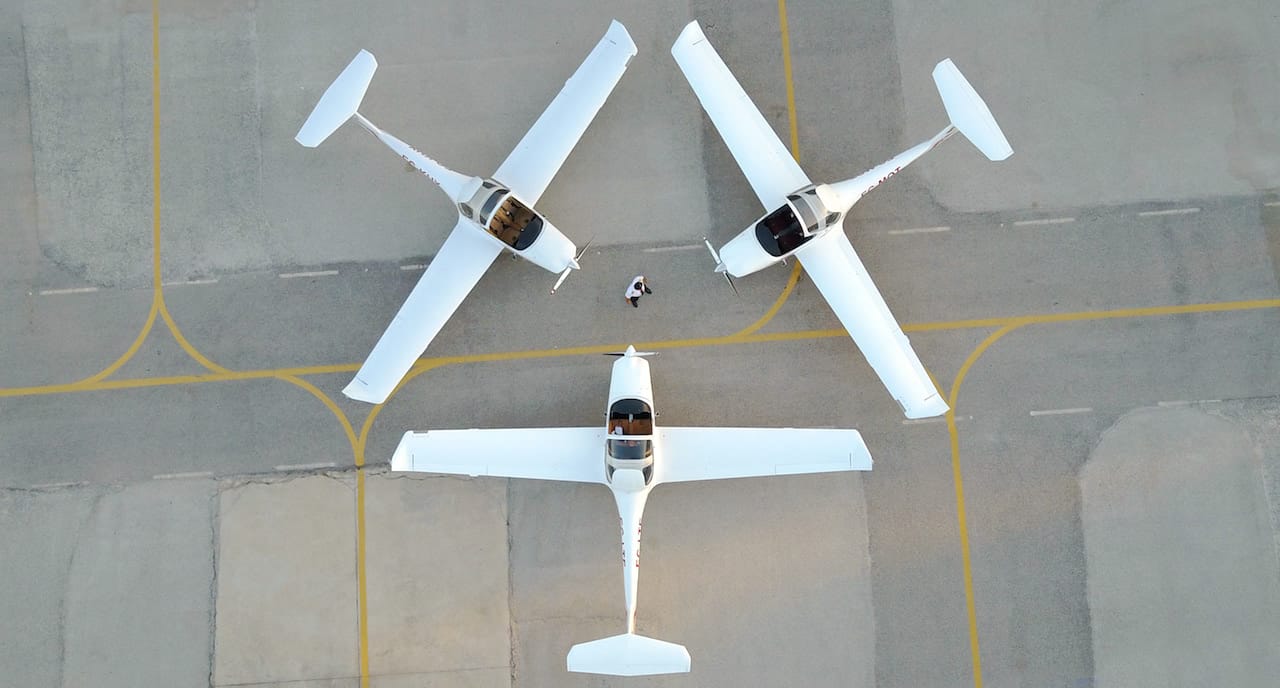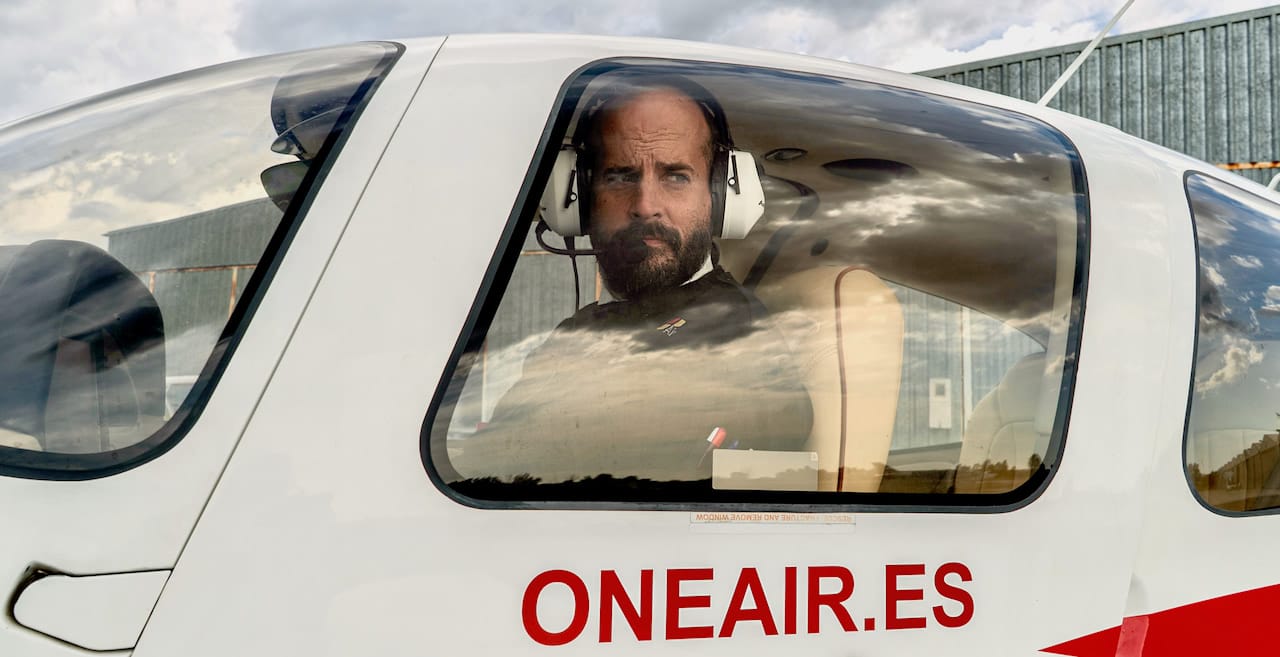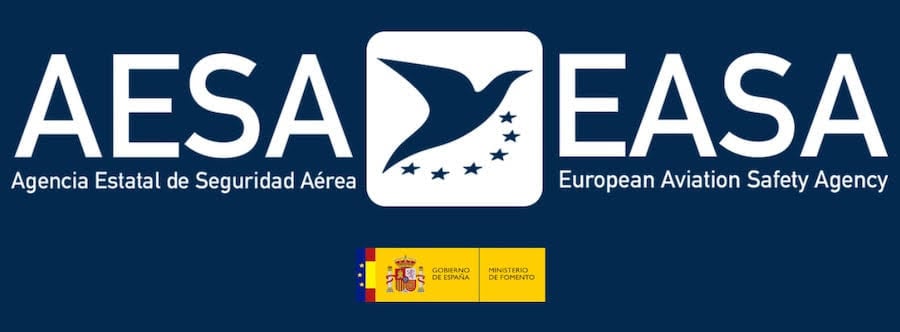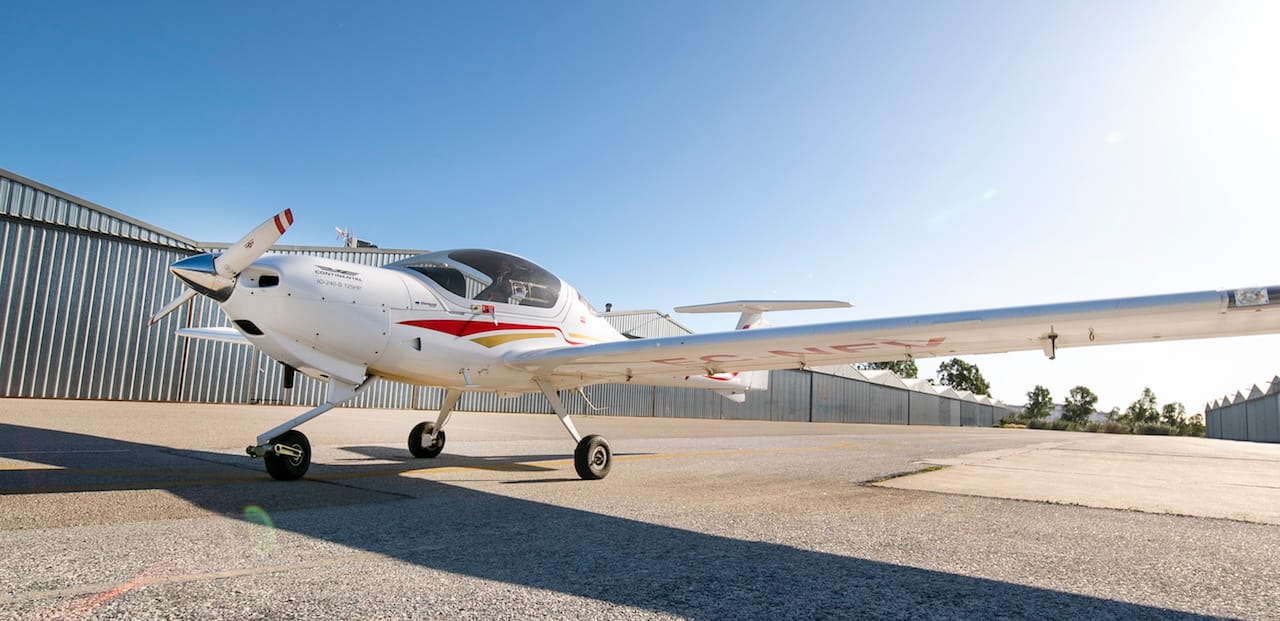Flight Training in Europe
Useful guide to choose the best flying school.
FULL GUIDE
How to choose the best school for flight training?

Useful guide to choose the best flying school.
With the growing demand for aeronautical personnel expected in the coming years (don’t miss our post on post-covid aviation growth forecasts), the supply schools for flight training in Europe has also increased.
So, if you are thinking of studying a pilot course, here are a few guidelines that will help you on your way to finding the best flight school for you, out of all those that exist.
Contents
As you know, the opening of new air routes and the emergence of new airlines, especially in the Asia-Pacific region, has triggered the demand for new commercial pilots and other professionals in the industry.
Due to this, the number of schools for flight training in Europe has increased in recent years. So, if you are thinking about doing a Commercial Pilot Course or a Private Pilot Course, you are probably evaluating which one is the best for you.
Here are a few tips to help you get your thinking straight, so if you want to know which European flight school is best for your training, read on.
We offer you three ways to become a commercial pilot!

Approved
Organisation
Aircraft
Fleet
Simulation
Centre
Operating
Bases
Transfer +
Accommodation
No one’s going to answer directly such a blunt question. Moreover, we are not here to try to convince you of anything; after all, ‘the truth only has one way‘, and we are sure that you will find it on your own.
There are different factors that you should take into account when choosing between the best flying schools in Europe for flight training, but we’re sure you already know a few. Let’s look at the most important ones.

This point is paramount. In fact, before looking any further, you should make sure that you will study in an approved aviation school, and recognised as an ATO, by the competent authority.
Moreover, in our case, One Air is the official headquarters for the AESA FCL exams in Malaga; therefore, you will be able to take your exams in the same facilities where you are training, without having to travel anywhere else.



ONE AIR
Official Headquarters for AESA FCL Exams in Malaga
State Aviation Safety Agency
The type of airport where you spend your flight hours will determine the quality of those hours.
Flying in a private aerodrome will give you peace of mind and confidence in your first phases of flight; which is essential for perfect integration into the aeronautical environment.
However, doing it in an international airport, with a high influx of commercial flights, will be decisive for your training and will provide an invaluable plus to your flying hours.
In addition, find out what the facilities where you are going to study are. Find out if they have a good library, if their classrooms are digitalised or if they are comfortable enough to spend the long hours of study; remember that it all adds up when it comes to finding the best flight school for you.
Take a look to our new facilities…

Another aspect that you should take into account when making your choice is the fleet: find out how many twin-engines it has, how many single-engines, what avionics its aircraft uses and, above all, how old are the planes.


Diamond DA20-C1
Single-Engine
G500 / G650 /
IFD440 / G3X Touch
9 Aircraft

Diamond DA40
Single-Engine
G1000
2 Aircraft

Diamond DA42
Twin-Engine
G1000
3 Aircraft

Cirrus SR20
Single-Engine
Glass Cockpit
4 Aircraft
Tecnam P2008 JC MKII
Premium Edition
Single-Engine
Glass Cockpit
G3X Touch
3 Aircraft

The best flight schools in Europe invest in having a modern and technologically advanced fleet, which will provide you with optimal flying experience and consistent with what you will find in your working life. Besides, the newer the aircraft, the more hours they can offer you to fly.
Diamond & Cirrus Aircraft Fleet

Another factor of great importance when choosing between the best flight schools in Europe is the maintenance of the fleet. Just as a good fleet is decisive, having a maintenance team that is up to the task is crucial to ensure a smooth running of the aircraft.
With an own maintenance centre, which is dedicated exclusively to the school’s aircraft, immediate support is offered to comply with the schedule and the dreaded cancellations are minimised. In addition, aircraft downtime due to periodic overhauls is significantly reduced.
Aeronautical Maintenance Centre

Investment in advanced simulators is equally essential. What’s more, the more advanced the simulation technology, the smoother your transition from simulated flight to real flight will be.
Also, look at the variety of simulated flight options they offer. How many airline simulators do they have? And how many FNPT II certified simulators? Are they replicas of the aircraft you will be flying next? Do they provide trainers or other specific simulators to enrich your training?

AIRBUS A320
EASA FTD
Compliant
1 Simulator
BOEING 737-800 NG
EASA FTD
Compliant
1 Simulator
FNPT II APS MCC ALX
Medium Jet
Airbus A320
1 Simulator
FNPT II APS MCC ALX
MEP
COMPLEX
1 Simulator
FNPT II APS MCC ALX
SEP
COMPLEX
1 Simulator
FNPT II AL42
Twin-Engine
DA42 Replica
1 Simulator
Redbird Xwind
Full Motion
Crosswind
1 Simulator
DA20 C1
Glass Cockpit
Garmin G600
GTN 650
1 Simulator
DA20 C1
Analogue
GSN 530
1 Simulator
Cirrus SR20
Glass Cockpit
Avidyne Entegra
1 Simulator
Cirrus SR22
Perspective
Glass Cockpit
Garmin 1000
1 Simulator
G1000 Trainer
Garmin 1000
Simulator
1 Simulator

Virtual Cockpit VR
Instrumental Touch-Screen
Simulator
4 Simulators


We have already talked about fleet, facilities, simulators and airports; but what else should you look at before making your choice?
First of all, consider how much time you will need to obtain your license. As a minimum, in an integrated program, it usually takes between 16 and 18 months from the time you start until you get your frozen ATPL.
During this time, it is essential that the flight school you choose offers you the maximum added value, don’t you think?

The city where the school facilities are located will become your home during the entire training; therefore, it will be a detail that will make the difference.
The main reason to consider the location of the school is the weather. The better the weather, the more hours to fly. How many schools for flight training in Europe boast an average of 320 sunny days a year? That’s almost 3,000 hours of sunshine a year!

Nowadays, one of the reasons that most restrains any person who wants to start a job or new studies far from home is the rent. Looking for a place to live is a task that requires effort, time and money, and it does not guarantee that you will find what you are looking for.
For this reason, the best aviation schools tend to attract more students because they have been concerned with finding a solution to the problem of finding accommodation.
A new concept of luxury accommodation for students

You should also make sure that the flight academy you eventually choose offers its students a private transport between the main facilities, your residence and the airport where it operates. What good would excellent accommodation do if you can’t get to your classes quickly?
Daily shuttle between flight school, airports and residence

Look for information, compare the different schools, study your needs and, when you decide which centre you want to train at, make an appointment.
Write down all your doubts and make sure that, the day of your visit, they are all solved; this will be the last push you will need to convince yourself that you have found the best pilot school for flight training in Europe.



To provide the best experiences, we use technologies such as cookies to store and/or access information on your device. Consenting to these technologies will allow us to process data such as browsing behaviour or unique identifiers on this site. Not consenting, or withdrawing consent, may adversely affect certain features and functions.
